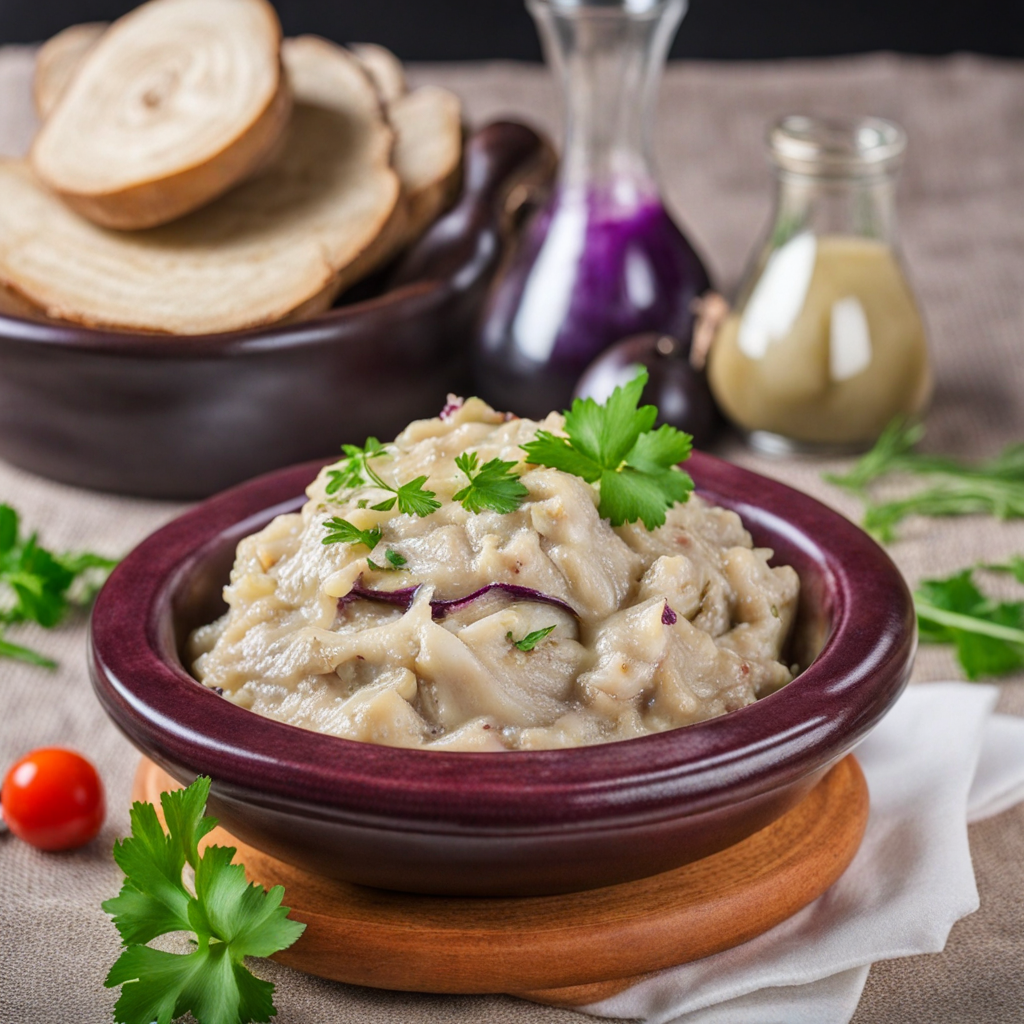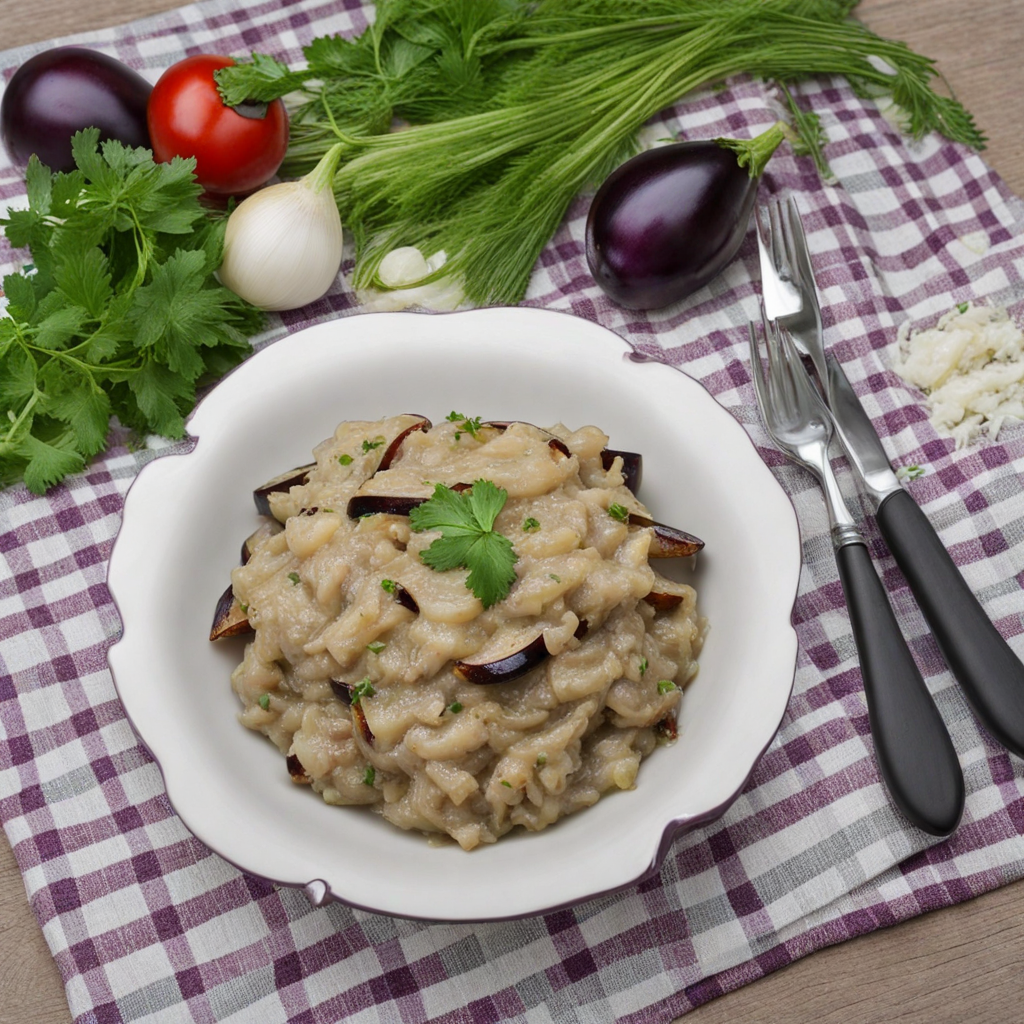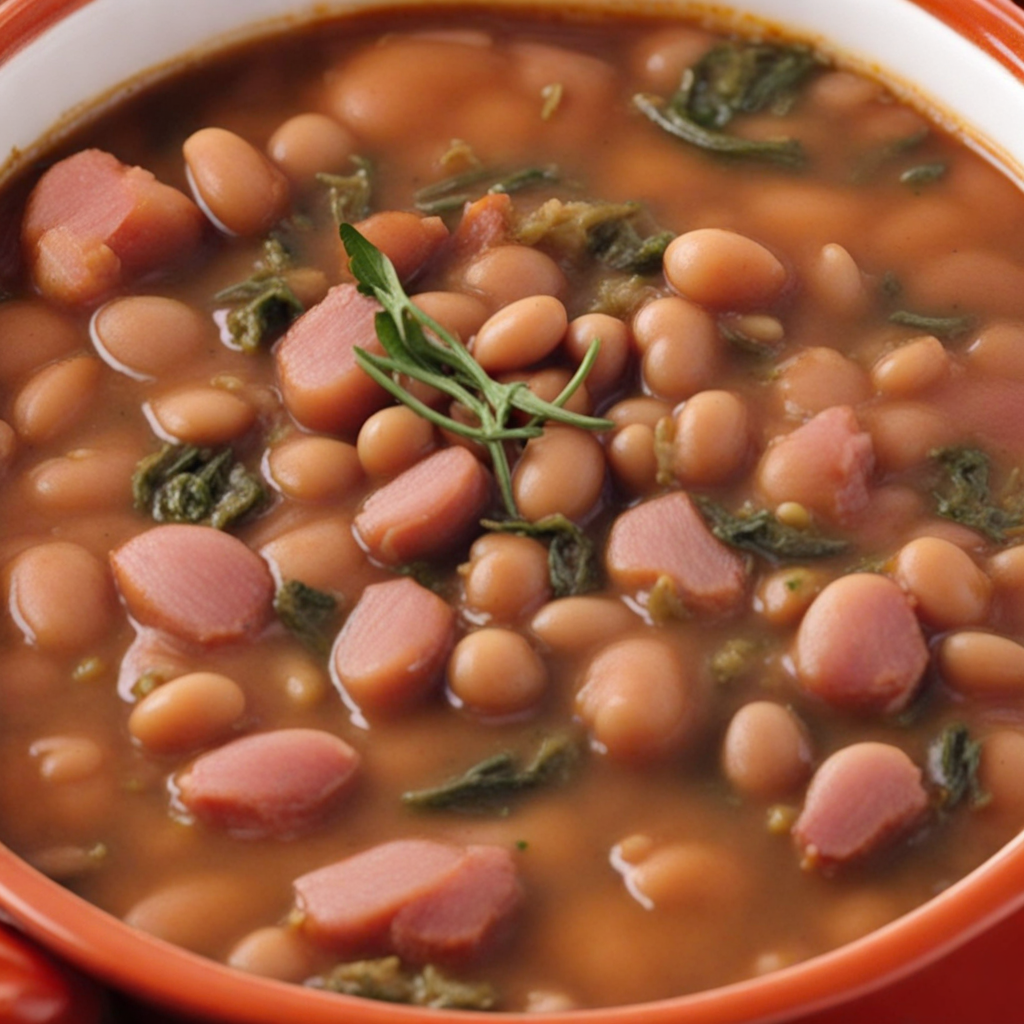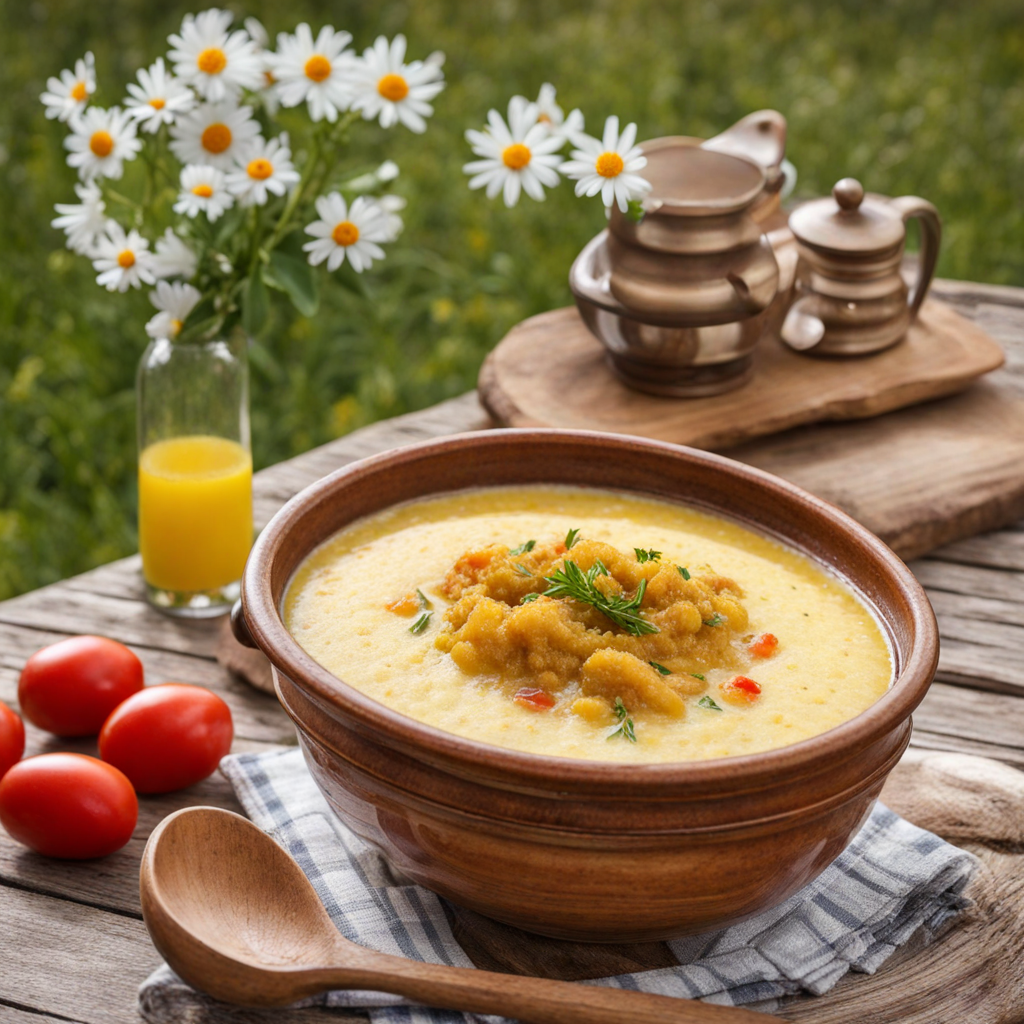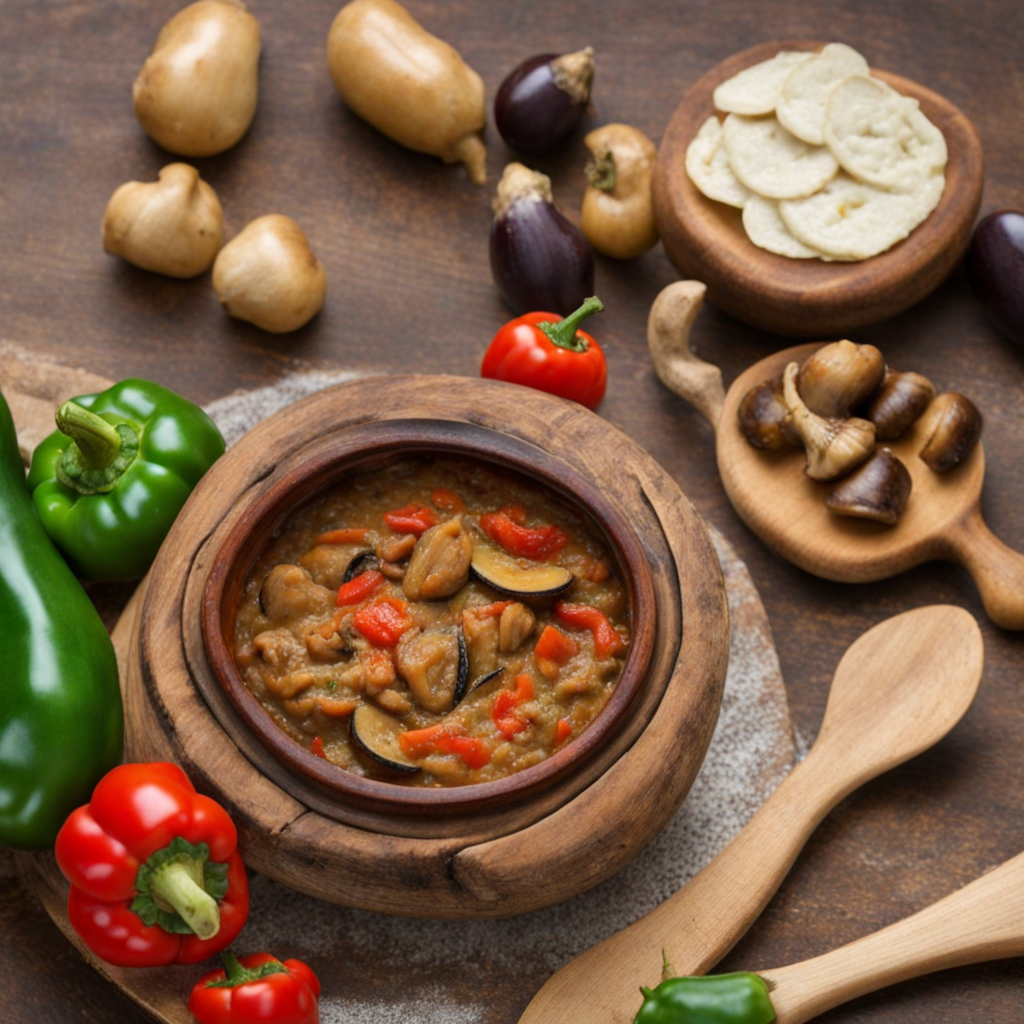Eggplant Salad
Eggplant Salad, known as "Salată de Vinete" in Romania, is a delightful and creamy dish that showcases the rich flavors of roasted eggplant. The preparation begins with the eggplants being charred until their skin is blistered and smoky, which imparts a deep, savory essence to the salad. Once cooled, the flesh is scooped out and mashed, creating a velvety base that is both hearty and smooth. This dish is a testament to the Romanian love for simple, yet flavorful ingredients that come together to create something truly special. To enhance the eggplant's natural taste, finely chopped onions are mixed in, adding a subtle crunch and a hint of sweetness. The salad is then enriched with a generous drizzle of sunflower oil, which is a staple in Romanian cuisine, imparting a light and nutty flavor. A touch of lemon juice brightens the mixture, balancing the earthiness of the eggplant with a refreshing acidity. Some variations even include mayonnaise or yogurt, which adds an additional layer of creaminess and a touch of tang. Eggplant Salad is often served as a spread on crusty bread or as a side dish alongside grilled meats, making it a versatile addition to any meal. Its rich, smoky flavors and creamy texture make it a perfect companion for summer picnics or festive gatherings. Enjoying this salad is not just about savoring new tastes, but also about experiencing a cherished part of Romanian culinary tradition that celebrates the beauty of simple, wholesome ingredients.
How It Became This Dish
Salată de Vinete: A Culinary Journey Through Romanian History #### Origins and Ingredients Salată de vinete, or eggplant salad, is a beloved dish in Romanian cuisine, characterized by its creamy texture and smoky flavor. The primary ingredient, eggplant, is a staple in many Mediterranean diets, but its introduction to Romania is steeped in history. The eggplant, originally cultivated in India, made its way to the Mediterranean through the Arab traders in the Middle Ages. It was embraced by various cultures, each adapting it to their local recipes and culinary preferences. In Romania, the preparation of Salată de vinete likely began in the late 19th to early 20th century, coinciding with the growing popularity of eggplant in the Balkans. The dish is traditionally made with roasted eggplant, which is then peeled and mashed, blended with onions, sunflower oil, and sometimes mayonnaise. The roasting process imbues the eggplant with a distinct smoky flavor, which is a hallmark of this dish. #### Cultural Significance Salată de vinete holds a special place in Romanian culture, often served as an appetizer during family gatherings, festive occasions, or simply as a part of daily meals. It is a dish that embodies hospitality, as it is typically offered to guests alongside an array of other meze—small dishes that include pickles, cheeses, cured meats, and various spreads. The preparation of Salată de vinete is often a communal affair, bringing families together in the kitchen to roast, peel, and blend the eggplants. In Romania, food is deeply intertwined with cultural identity, and Salată de vinete is no exception. It reflects the agricultural bounty of the region and the Romanian penchant for preserving seasonal ingredients. The dish is celebrated during the hot summer months when eggplants are in season, and it is often enjoyed with fresh bread, making it a staple of summer picnics and outdoor gatherings. #### Development Over Time The evolution of Salată de vinete can be traced through the broader historical context of Romania. The country has a long history of cultural exchange due to its geographic location at the crossroads of Eastern and Western Europe. This has allowed Romanian cuisine to absorb various influences—from Ottoman to Austro-Hungarian and Slavic. As a result, Salată de vinete can be seen as a product of these diverse influences, blending local ingredients with techniques borrowed from neighboring cultures. The 20th century was a pivotal time for Salată de vinete, especially during the communist era in Romania. The dish became symbolic of traditional Romanian values amidst a rapidly changing political landscape. With limited access to foreign ingredients, Romanians adapted their recipes, focusing on what was locally available. This period saw an increased emphasis on preserving traditional foods, and Salată de vinete emerged as a classic dish that represented resilience and connection to heritage. In the post-communist era, Romania opened up to global influences, and the culinary scene began to diversify. Chefs and home cooks started experimenting with Salată de vinete, incorporating modern twists while respecting tradition. Variations emerged, with some recipes adding roasted peppers, spices, or even avocado, reflecting contemporary tastes and the globalization of cuisine. #### Modern Interpretations and Global Recognition Today, Salată de vinete is not only cherished in Romania but has also gained recognition in the global culinary community. Romanian expatriates and chefs have introduced the dish to international audiences, celebrating its rich flavors and simplicity. Food festivals, cultural events, and Romanian restaurants outside of Romania have featured Salată de vinete as a way to showcase the country’s culinary heritage. In recent years, the rise of vegetarian and vegan diets has further popularized Salată de vinete. With its plant-based ingredients and rich taste, it has become a favored option for those seeking healthy alternatives without sacrificing flavor. The dish’s versatility allows it to be served as a dip, spread, or even a sandwich filling, making it suitable for various dining occasions. #### The Making of Salată de Vinete The traditional preparation of Salată de vinete is an art form in itself, often passed down through generations. The process begins with selecting fresh, ripe eggplants, which are then roasted over an open flame or in an oven until the skin is charred and the flesh is tender. After roasting, the eggplants are placed in a bowl and covered with a cloth to steam—this step helps to loosen the skin, making it easier to peel. Once peeled, the eggplant flesh is mashed or blended until smooth. The addition of finely chopped onions, sunflower oil, and salt creates a creamy emulsion, with some recipes calling for a touch of lemon juice or vinegar for acidity. Variations may include mayonnaise or even sour cream for a richer texture. The key to a great Salată de vinete lies in balancing the flavors—smoky, savory, and slightly tangy. #### Conclusion Salată de vinete is more than just a dish; it is a culinary symbol of Romania's rich history, cultural resilience, and evolving identity. As it continues to adapt to modern tastes while remaining rooted in tradition, this eggplant salad serves as a reminder of the importance of food in connecting people to their heritage and to one another. Whether enjoyed in a family setting or at a vibrant restaurant, Salată de vinete encapsulates the warmth of Romanian hospitality and the joy of sharing a meal, making it a timeless staple of the Romanian culinary landscape.
You may like
Discover local flavors from Romania


